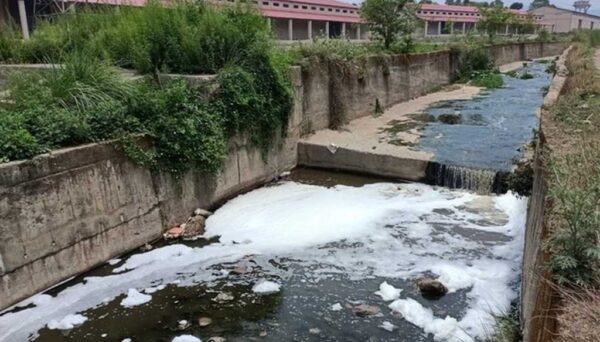
Shimla, September 11: Water quality in major Himachal Pradesh rivers, including Beas, Sutlej, Yamuna, Giri and Sirsa, has fallen below national standards in several areas, according to the latest annual report released by the State Pollution Control Board. The report highlights the alarming levels of pollution in the state’s major water bodies, where about 210.5 million litres of polluted water is generated every day. However, the sewage treatment plants (STPs) across the state have a capacity of only 119.5 million litres per day, and of this, only 80.8 million litres is being treated effectively.
As a result, about 129.7 million litres of untreated sewage and effluent is being discharged directly into the rivers every day. The report has identified urban sewage, industrial effluents and agricultural runoff as the primary sources of pollution.
The report paints a grim picture of the Beas river, where water quality has been steadily declining. The river water quality in the upper reaches above Manali remains relatively good, but the situation is getting worse downstream. The water quality in these areas has been classified as ‘C’ category, indicating poor condition. The concentration of coliform bacteria, harmful to human health, has been found to be higher than dangerous levels in many stretches of the river.
The condition of the Sirsa river, especially downstream from the Baddi and Kala Amb industrial areas, has been reported to be extremely alarming. The biological oxygen demand (BOD) levels in these areas have been found to be several times higher than the national standards. This high BOD has led to dangerously low oxygen levels in the water, posing a serious threat to aquatic life.
Smaller rivers like the Giri and Ashwini Khad are also not untouched by the pollution crisis. The Ashwini Khad, particularly classified in the ‘C’ category, has recorded severe pollution levels where urban drainage joins the river. The concentration of coliform bacteria and BOD in the Ashwini Khad has been reported to be several times higher than the permissible limits, raising concerns for both public health and the environment.
The report pointed out that Himachal Pradesh’s STPs are performing poorly. While the state generates 210.5 million litres of sewage per day, the treatment capacity is 119.5 million litres per day, of which only 80.8 million litres are properly treated. This leads to about 130 million litres of untreated wastewater flowing into rivers and water bodies every day, further adding to the pollution crisis.
Anil Joshi, member secretary of the state pollution control board, stressed that water quality is assessed monthly at 243 locations across the state. These assessments included 191 river water samples, 52 groundwater samples and samples from other water sources. The findings have called for urgent action to improve sewage treatment infrastructure, regulate industrial waste and monitor agricultural runoff to prevent further degradation of the state’s rivers.
As water pollution worsens, the state’s rivers, which are vital for drinking water, agriculture and wildlife, are facing a growing environmental crisis. Urgent and coordinated action is necessary to reverse this alarming trend and protect the health of both the population and ecosystems that depend on these water sources.

Continuing the achievement of the journey of effectiveness and credibility of more than 10 years in the career of journalism, as a woman journalist, I am Serving as the founder, promoter and editor of DiaryTimes with the trust and support of all. My credible coverage may not have given a big shape to the numbers, but my journey presents articles that make you aware of the exact and meaningful situations of Himachal’s politics, ground issues related to the public, business, tourism and the difficult geographical conditions of the state and financial awareness. DiaryTimes, full of the experience of my precise editorial expertise, is awakening the flame of credible journalism among all of you, so that the eternal flame of meaningful change can be lit in the life of the people of the state and the atrocities being committed against the people can be brought to the fore, I am motivated for that. If even a small change comes with the power of my journalism and the whole world becomes a witness to that issues, then I will consider myself fortunate.








